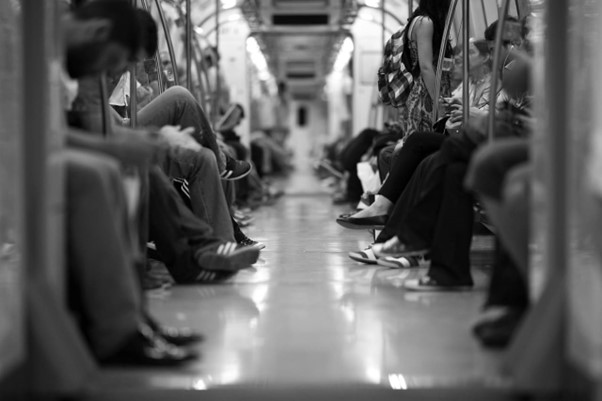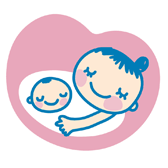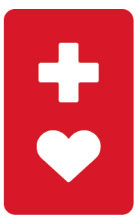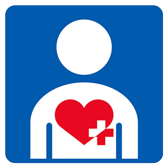
Basic manners explained in an easy-to-understand manner
There are differences in traffic manners between Japan and other countries. Especially when using public transportation such as trains and buses, talking on a smartphone, etc., which is commonplace in one’s home country, is against manners in Japan.
This is due to the consideration for pacemaker users and the fact that talking on a smartphone is a nuisance to those around you. It is important to understand Japanese manners in order to avoid unintentional violations of etiquette.
◊Differences in Japanese Traffic Manners

In Japan, consideration and consideration for those around you is considered most important in public places.
For example, “put your smartphone on silent mode” and “stand in line” are some of the considerations for a pleasant experience for both parties.
Basic traffic manners also translate into good manners in public places. Learn them well and enjoy your trip in Japan.
◊Japanese Traffic Manners on Trains and Buses

Here are 10 basic traffic manners on Japanese trains and buses.
You may find it hard to remember them, but it is not that difficult. If you do violate any of these manners, just admit your mistake, apologize, and try to remember the correct manners again.
・Waiting in line for a train or bus
If there are people waiting in line at a station or bus stop, please keep your turn and line up at the back of the line. It is bad manners to “disrupt the line” or “sidestep,” which can be a nuisance to those in line ahead of you.
Also, some people may feel uncomfortable if you get too close, so keep a reasonable distance from the person in front of you so that your body or baggage does not come in contact with them.
When boarding, please follow the person in front of you and ride calmly. If you rush to push or force your way onto the train, you risk serious confusion or injury.
・Do not litter.
Littering is prohibited at train stations and bus stops. It is Japanese manners not to litter not only on trains and buses, but also on streets and in stores.
However, if a trash can is provided, you can throw away trash as long as you follow the rules and sort it accordingly. Unlike in other countries, many places in Japan do not have trash cans, and it is not easy to throw trash away. In places where there are no trash cans, you will need to take your trash home with you, so it is convenient to carry a small plastic bag or something similar.
・Smartphones and cell phones are on silent mode in the car.
Put your smart phone or cell phone on silent mode on buses and trains. Do not talk on the phone in the car either, as it can be a nuisance to those around you.
Other sources of noise include portable game consoles and earphones, which can make the people around you uncomfortable without your knowledge. Take precautions such as turning off the sound of game consoles and earphones.
Even if there is no sound emitted, your arms may bump into the console and get in the way when it is crowded. It is always a good idea to be aware of your surroundings to avoid unknowingly violating manners.
・Do not make noise or play on the sling or seat
Hanging on to the straps in the car or jumping on the seats is not only a nuisance to those around you, but can also lead to unexpected injuries or accidents.
It is also bad manners to make loud noises or occupy seats unnecessarily. Try to stay quiet in the car, and if you have baggage, place it on your lap or on a shelf so that others around you can spend a comfortable time.
・Do not climb into your seat with your shoes on.
It is bad manners to put your feet on a train or bus seat with shoes on. If you put your feet on the seat with your shoes on, the seat surface will become dirty and others will not be able to sit on it.
In addition, train and bus companies clean the inside of trains and buses every day to ensure that passengers can use them comfortably. This is a traffic etiquette that people with small children should pay particular attention to.
・Priority seating is given to those who need it depending on the situation.
Priority seats are reserved for pregnant women, people with infants and toddlers, the elderly, and people with physical disabilities. If a seat is available, there is no problem with sitting in it, but be willing to give it up to someone who needs it.
Some people who need priority seating may not be able to tell at a glance whether they need it or not. If you see someone wearing a maternity mark or a heart-plus mark, even if you cannot tell from their appearance, ask them to come over to you. It would be nice if you could offer your seat to someone in need even if they are not in the priority seating area.

Image credit: Government of Japan Public Relations Online
Maternity Mark
This mark is worn by pregnant women when using public transportation. It is difficult to notice the mark by appearance alone, especially if you are in the early stages of pregnancy when your belly is not noticeable. If you see a woman wearing the mark, be considerate and give up your seat.

Image Credit: Government Public Relations Online
Help Mark
This mark is worn by those who need help from others or those who need consideration from those around them even though it is not apparent from the outside.
Various people have it, including those with artificial joints, internal disabilities, intractable diseases, and early pregnancy.

Image credit: Government of Japan Public Relations Office Online
Heart Plus Mark
This mark is for people with internal diseases or disabilities of the body. It may be difficult to tell from the outside whether a person with an internal disability requires consideration. If you see the “Heart Plus” mark on a train or bus, give consideration to the person by offering your seat.
・Do not sit or place luggage especially near the door
It is bad manners to sit or place luggage near the door, as it is a nuisance to those getting on and off the train.
Even if you are away from the door, you should try to stay out of the way as much as possible by putting your backpack in front of you if you are standing, or putting your luggage on your lap if you are sitting on a seat.
・Eating and drinking are prohibited in principle.
Eating and drinking are generally prohibited on trains and buses. On Shinkansen trains and long-distance buses, it is not against manners to eat, but avoid strong-smelling food and food that can spill easily.
Drinking alcohol on board is also prohibited. The smell of alcohol and the effects of drinking may cause loud voices, blindness to the surroundings, and other disturbances to those around you. In addition, alcohol may increase the risk of injury and accidents.
・No cigarettes or e-cigarettes on board or at stations
In Japan, smoking is prohibited inside trains and buses, as well as in places where there are no smoking areas, such as near stations and bus stops, all day long. If there are smoking areas, smoking is only allowed in them. In addition to paper cigarettes, electronic cigarettes and similar products are also prohibited because of their potential to cause discomfort and anxiety to those around them.
If you feel the urge to smoke, get off the train or bus and use the smoking area.
・Getting in and out has priority over getting off.
When getting on and off buses and trains, the person getting off has priority. The number of people who can get on a train or bus is limited, and if you get on first, the person trying to get off may not be able to get off.
If someone is getting off, move a little away from the door and wait until everyone gets off.
This manner should be practiced not only on trains and buses, but also in elevators. Good manners will help prevent injuries, accidents, and problems.
◊Cab Traffic Manners [Empty Cars, No Tipping Required].

When you want to take a cab, raise your hand to stop a cab on the road. Cabs on the road are available for boarding if the display shows “vacant”.
You can also board a taxi with a “premium” sign. However, please note that the late-night and early-morning surcharge applies, and the fare is higher than the normal fare. If a fare other than those listed above is displayed, it means that you cannot board the bus for some reason. Note that even if you raise your hand, the taxi will not stop.
Also, cab doors open automatically, so do not open and close them yourself. Tipping is not customary in Japan, so there is no problem even if you do not pay.
Have a good trip with Japanese traffic manners!
When using public transportation such as buses and trains in Japan, special attention should be paid to smart phones, eating and drinking, and traffic manners when getting on and off the bus.
In public places where there are many people, loud voices, sounds, and smells can cause serious problems. In addition, care must be taken when getting on and off the bus to avoid injury or other problems. These manners can be expressed with words such as “consideration” and “care,” and are an important Japanese culture and way of thinking that should be observed in other situations as well.
If you understand the basics of traffic manners, you will be able to avoid major problems and enjoy Japan more.
Q.Can I eat and drink on trains and buses?
A.Eating and drinking on trains and buses is generally prohibited.
However, it is acceptable to drink water as long as you do not spill it or otherwise disturb others. On bullet trains and long-distance buses, it is not against manners to eat, but avoid strong-smelling or easily spilled food.
Q. Is tipping necessary for cabs?
A. Tipping is not required for cab rides as there is no tipping culture in Japan.

